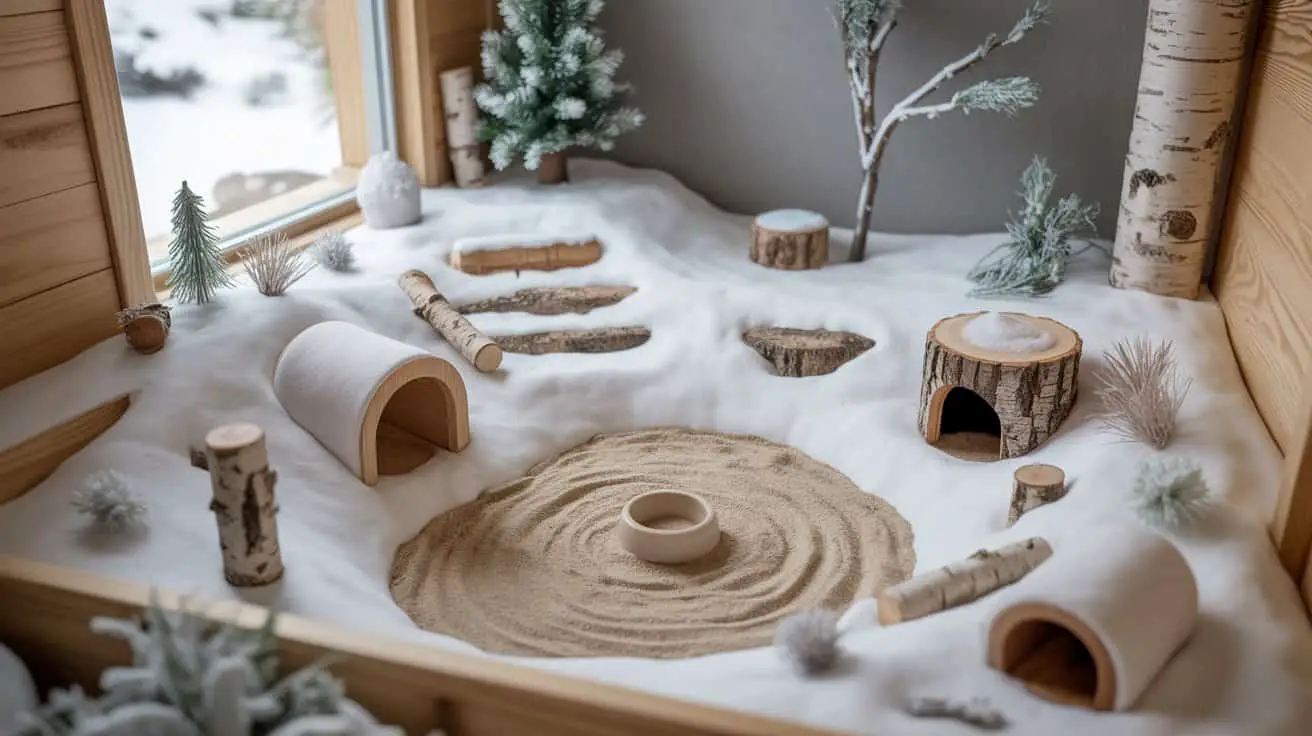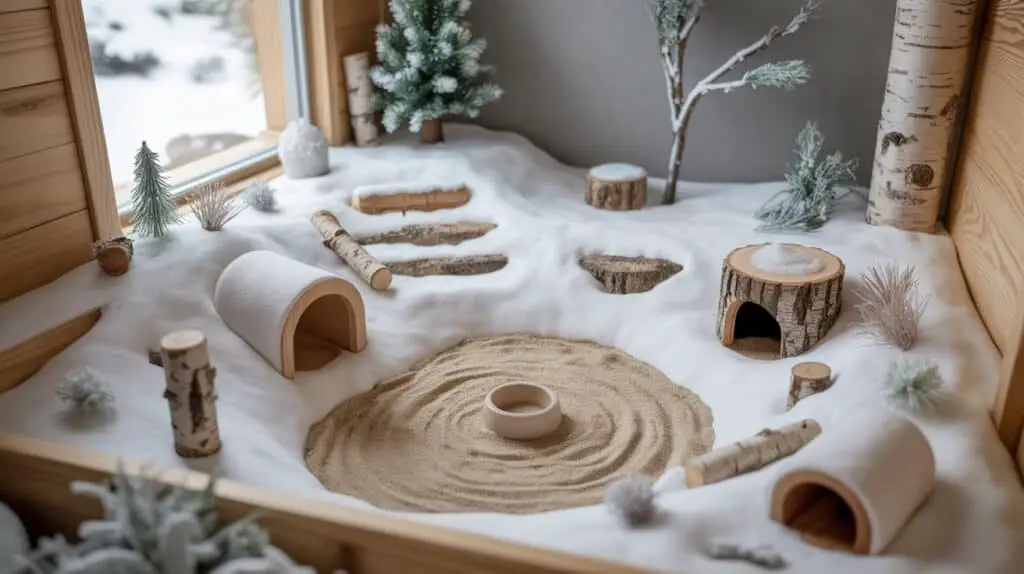
If you’ve ever stared at your hamster’s enclosure and thought, “You deserve a seasonal makeover too,” you’re in the right place. There’s something oddly comforting about giving your little fluff a cozy fall or winter setup—like decorating a miniature cabin retreat, only this one comes with tunnels and chew toys instead of throw pillows. When the weather cools down, a warm, natural setup isn’t just pretty—it helps your hamster feel secure, snug, and endlessly curious.
I remember my first “fall refresh” for my hamster’s tank. I swapped out the bright summer sand for earthy tones, tucked a few dried leaves around the hide, and added a wooden ladder I’d made from popsicle sticks. It looked like a tiny forest floor, and my hamster loved it—she disappeared under the bedding for hours, only popping up like a tiny forest spirit when it was time to snack.
Whether you want to bring autumn’s warmth or winter’s calm into your hamster’s world, here are some natural, cozy, and realistic cage ideas that make sense for both your pet and your living room.
1. The Autumn Forest Hideaway
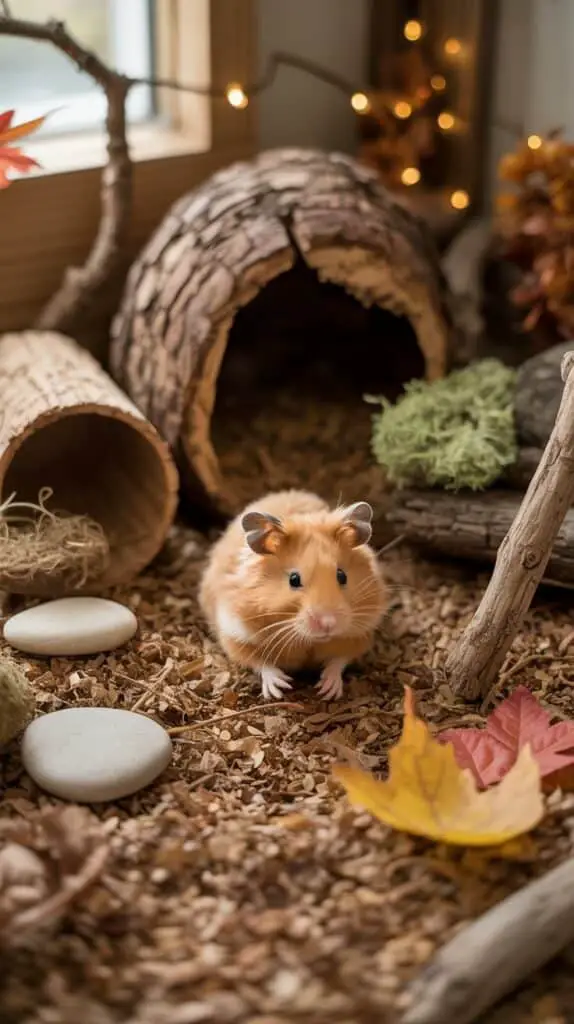
Think earthy tones, dried moss, and a layout that mimics a forest floor. Start with deep bedding in mixed shades of brown and beige to give your hamster room to burrow. Add small cork tunnels, smooth stones, and a few pieces of safe driftwood for climbing. A hideout made from untreated wood or a carved coconut shell fits perfectly.
You can scatter a few dried leaves (safe ones only) for that “crunchy underfoot” sound that feels very autumn. Soft warm light from the room—not inside the tank—will make the whole setup glow like a cozy woodland nook.
2. Warm Cabin-Inspired Terrarium
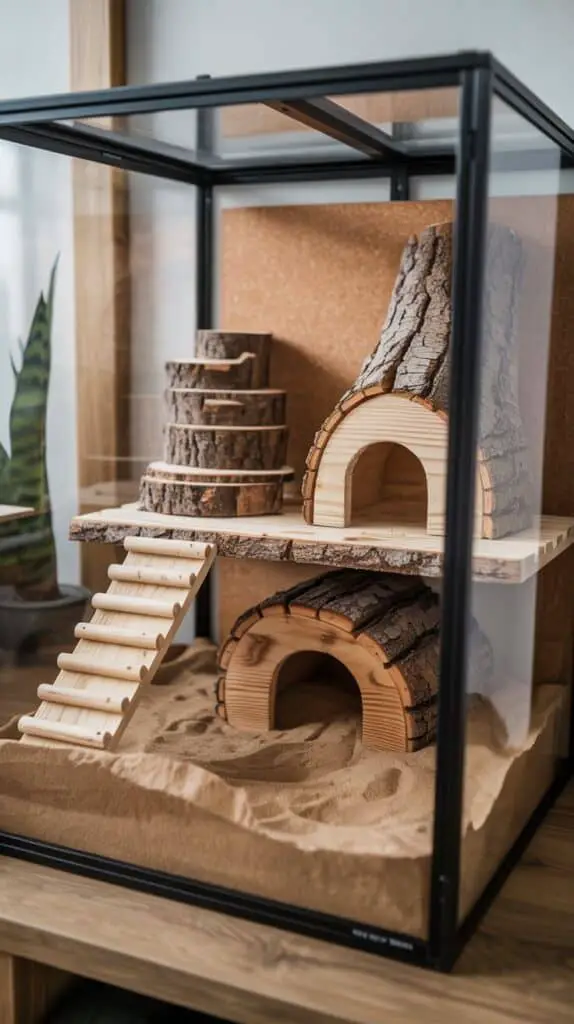
For colder months, think of a hamster version of a rustic mountain cabin. A glass terrarium works beautifully here, especially with wood textures and deep layers of bedding. Use wooden hides, bark pieces, and tiny handmade ladders to create a layered, burrow-friendly setup.
Add a sand area in one corner for texture contrast, and try a background of warm-toned paper or natural cork board to give it that snug, indoor feel. This design works well if your cage sits somewhere visible—it blends right in with winter home décor.
3. Cozy Winter Burrow Setup
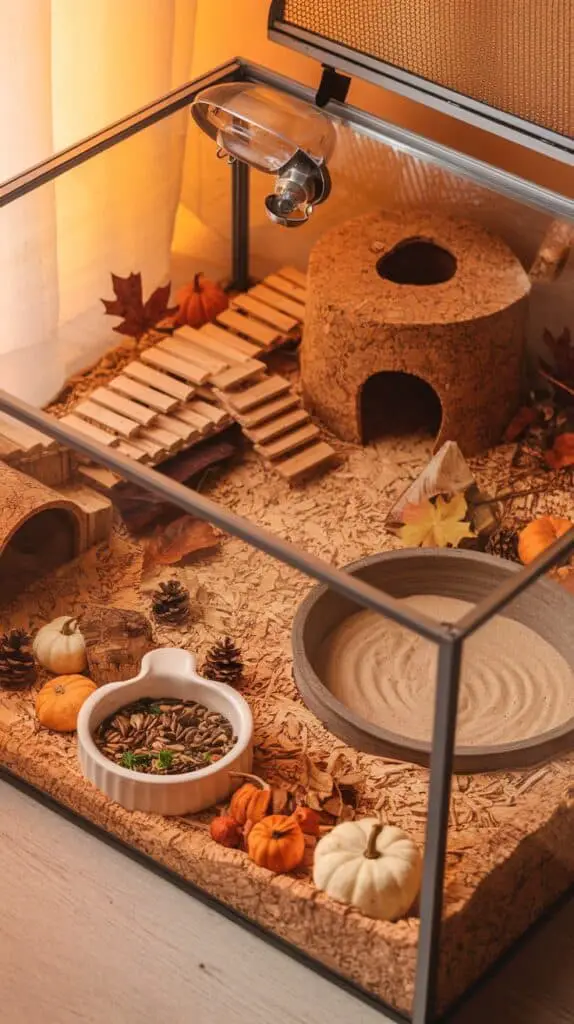
Winter setups are all about comfort and insulation. Create a base that’s extra deep, at least 25–30 cm of paper-based bedding for serious tunneling. Add a few cozy hideouts made from small baskets or wooden boxes filled with nesting material. Keep the colors neutral—cream, gray, and brown—to give it that frosted, Scandinavian look.
You can decorate outside the enclosure with pinecones, twigs, or fairy lights (never inside) to make it look like a tiny cabin tucked in snowdrifts. Perfect for watching with a cup of hot chocolate while your hamster digs through their own version of winter wonderland.
4. Rustic Farmhouse Hamster Enclosure

This design gives cottagecore energy without being overdone. Use a large bin-style cage or glass tank and add a wooden wheel, ceramic food dishes, and natural rope toys for climbing. If you like DIY, you can build small platforms from untreated pine wood or make tiny “furniture” pieces using craft wood—just make sure there’s no glue or varnish inside the hamster’s reach.
Straw mats, bark textures, and muted green accents give it that soft farmhouse look. It’s simple, charming, and endlessly photo-friendly.
5. DIY Natural Landscape Setup

If you enjoy creative projects, this is where hamster-scaping shines. Start with multiple “zones”—a digging area, a climbing zone with driftwood, and a calm rest corner. Use natural materials like moss, wood, and sand to make it feel balanced. You can build tunnels from paper tubes wrapped in hay or small clay arches for a rustic touch.
The trick is to keep everything low, safe, and chewable. When it’s done, the result looks like a tiny ecosystem—a hamster-sized national park with plenty of spots to explore.
6. The Snowy Woodland Theme
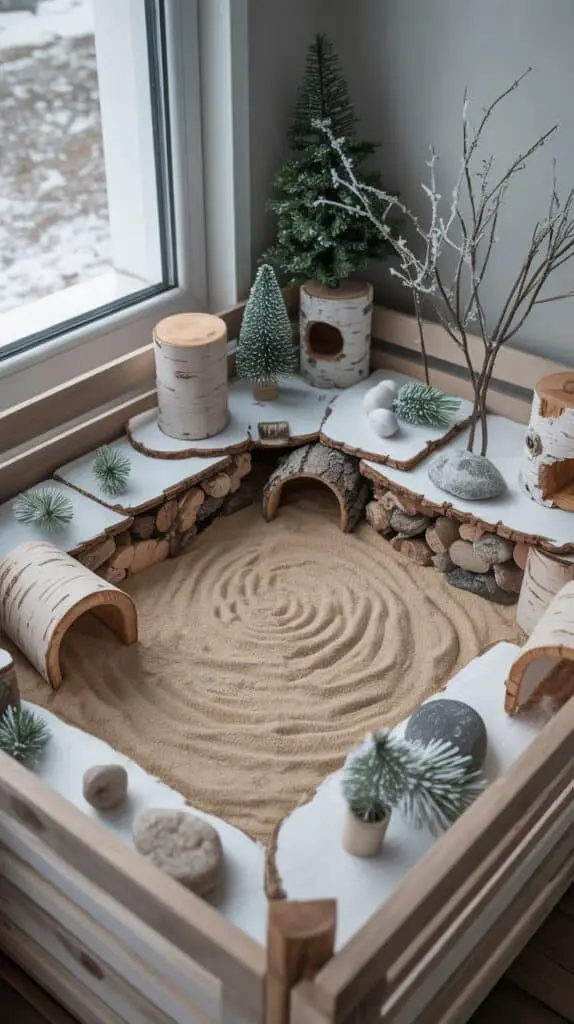
If you want something that feels like a little winter postcard, this theme is perfect. Picture a mix of white bedding, soft beige wood, and tiny natural accents that look like snow-dusted logs. Use light-colored cork bark, birch sticks, and small rock tunnels to add depth. You can create layers of bedding to form gentle slopes—almost like rolling hills. Keep hides tucked into corners and half-buried for warmth and privacy.
A ceramic or wooden hide shaped like a log fits beautifully here. Add a sand bath “clearing” in the center and maybe a few decorative touches outside the enclosure, like miniature pine trees or a frosted branch. It feels calm, wintry, and a bit magical without being over the top.
Final Thoughts
A natural hamster cage is one of those projects that feels as rewarding as it looks. It’s part decorating, part habitat building, and completely worth it once your hamster starts exploring. Fall and winter are perfect for cozy setups—soft lighting, deep bedding, warm textures, and materials that blend right into your home.
Whether you go full “autumn forest” or lean toward a snowy Scandinavian look, the goal is simple: create a space that makes your hamster feel safe and inspired to dig, build, and just be a hamster. And honestly, watching them thrive in something you built by hand? That’s the kind of quiet joy no store-bought cage can match.

